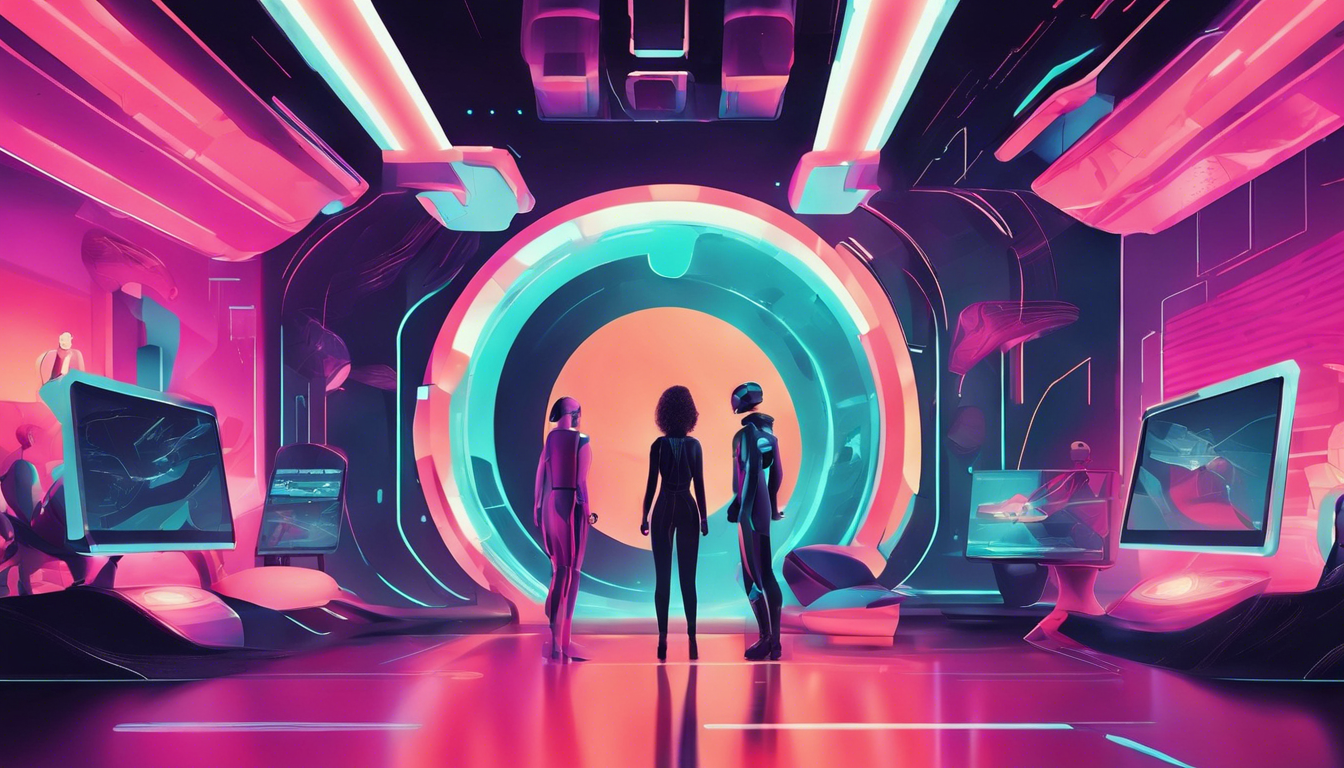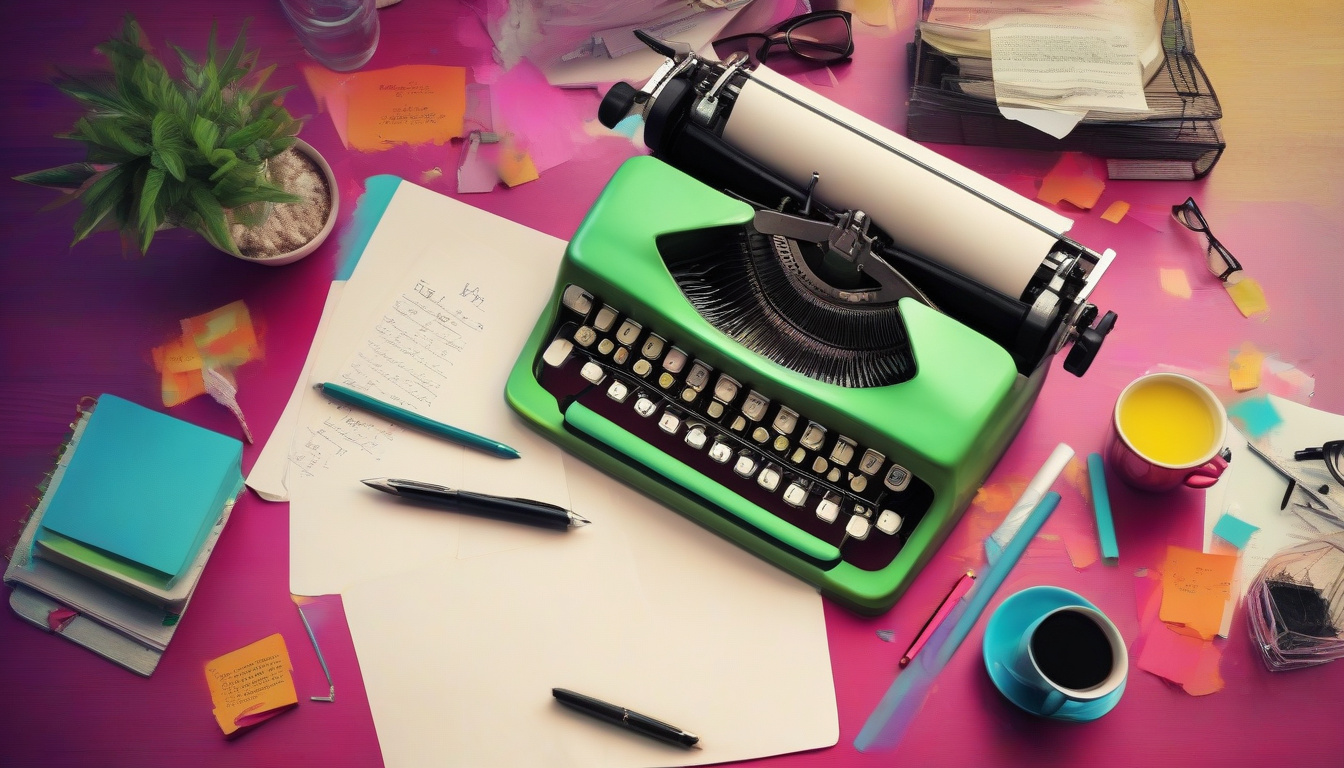
Lights, camera, action!
Welcome to the dazzling world of filmmaking, where creativity knows no bounds and the only limit is your caffeine intake.
But hold onto your berets, because we’re about to dive into a tech whirlwind that’s revolutionizing the silver screen: AI image recognition in filmmaking.
Yes, folks, you heard it right!
This quirky little marvel is not just the stuff of sci-fi flicks anymore; it’s the behind-the-scenes wizardry changing the game for screenwriters, filmmakers, and possibly even your neighbor’s cat.
Buckle up as we explore how AI is shaking things up, ensuring that creativity and cutting-edge technology go together like popcorn and butter!
The BEST AI Screenwriting Tool On The Market!
Key Takeaways
- AI image recognition is redefining traditional filmmaking practices.
- The technology enhances pre-production by streamlining asset management and script analysis.
- During post-production, AI helps in automating editing processes and improving visual effects.
- AI image recognition is influencing creative storytelling by enabling new narrative possibilities.
- Future trends indicate that AI will continue to evolve, further transforming the filmmaking landscape.
Introduction to AI Image Recognition in Filmmaking
Lights, camera, action!
Welcome to the dazzling world of AI image recognition in filmmaking, where pixels meet pixels on a digital dance floor, and creativity swirls like confetti in the wind.
Imagine your script—stuffed with enigmatic characters, tragic love stories, and plot twists sharper than a samurai sword—being interpreted and enhanced by intelligent algorithms that can identify emotions, categorize scenes, and even recommend shots hotter than a jalapeño pepper!
Yes, you heard it right!
With the rise of AI image recognition in filmmaking, your behind-the-scenes tasks can take a backseat while the tech-savvy wizards handle the nitty-gritty details of scene composition and continuity.
But hold on to your director’s chair, folks!
This tech isn’t here to replace your vivid imagination; it’s merely the unflappable sidekick that can streamline your creative process, ensuring your vision shines brighter than a Hollywood spotlight.
So, buckle up, because exploring this quirky fusion of artistry and technology promises one wild ride!
How AI Image Recognition Works in Film Production
Picture this: you’re in the middle of a hectic film production – coffee cups are overflowing, the script pages are flapping in the wind like an angry goose, and the director has just shouted, ‘Cut!’ for what feels like the fifty-seventh time.
Enter stage left: AI image recognition in filmmaking, the digital superhero you never knew you needed!
But how does this wizardry actually work?
Let’s pull back the curtain and reveal the magic wand behind this high-tech tool.
At its core, AI image recognition in filmmaking operates like a super-smart helper that can analyze and interpret visual data faster than you can say ‘roll camera.’ It scours through thousands of images and videos, recognizing patterns, faces, and objects in the blink of an eye (okay, maybe that’s a slight exaggeration—it still has a twinkle in its eye but works at lightning speed).
This technology uses neural networks, which are akin to the brain cells of a mammoth—albeit a very caffeinated, efficiency-focused mammoth—allowing it to learn from thousands of examples.
So, when it sees a scene with a dramatic dolly zoom, it doesn’t just shrug and go, ‘What’s this fancy term?’ No, it knows!
And just like a wise film critic, it notes every nuance, texture, and subtle expression to help you make your cinematic masterpiece even more compelling.
For filmmakers, this means a treasure trove of benefits: automating tedious tasks like tagging and organizing footage, identifying shooting locations, or even scouting for that perfect shot—less time on the nitty-gritty and more time being the quirky creative genius you are!
So, whether you’re optimizing a film’s post-production workflow or seeking insights on audience engagement by analyzing visual content, AI image recognition in filmmaking can drive your narrative home with a punch (or a gentle nudge, depending on the genre).
Who knew that a little tech innovation could turn your film shoots from chaotic shoeboxes of dreams into streamlined, polished showcases of brilliance?
Let AI be your ace in the hole, and watch as you effortlessly float through the production process like a modern-day movie magician!
‘The greatest gift of the technology revolution is the ability to be creative in ways we never dreamed possible.’ – John Maeda
Enhancing Pre-Production with AI Image Recognition
Ah, the glamorous world of filmmaking, where creativity meets chaos, and deadlines loom larger than a director’s ego on Oscar night!
Enter AI image recognition in filmmaking, the unsung hero that helps us transform our sometimes chaotic pre-production processes into a well-oiled machine.
Imagine a world where your storyboards spring to life without you lifting a finger – well, that’s what our friendly digital pal, AI image recognition, aims to do.
By scanning through mountains of reference images, it helps filmmakers identify key visual elements, such as locations, lighting, and even props, faster than you can say ‘action!’ From automating the tedious search for that perfect sunset backdrop to ensuring consistency in character design, this nifty technology allows screenwriters and filmmakers to focus on the real magic: storytelling.
So, buckle up your director’s chair and let AI image recognition in filmmaking take the reins; who knew being productive could be this entertaining?
The BEST AI Screenwriting Tool On The Market!
Streamlining Post-Production Processes with AI
Ah, post-production!
That magical time when the raw chaos of filming gets polished into a captivating cinematic jewel.
But if you’ve ever waded through countless hours of footage, squinting at your monitor like a confused raccoon, you know that streamlining those processes can feel like herding cats—and not just any cats, but cats on roller skates!
Enter the superhero of the editing world: AI image recognition in filmmaking!
With its pixel-savvy prowess, this dazzling technology can help filmmakers locate, tag, and categorize scenes faster than you can say ‘Where’s my continuity!’ Not only does it save invaluable time—because let’s face it, we’ve all loitered long enough in the editing bay pondering whether that clip of someone walking their pug really adds to the narrative—but it also gives filmmakers the creative freedom to focus on storytelling rather than the tedious logistics of editing.
Imagine having your scenes organized and ready to go just by telling your AI what to look for!
So, grab your finest caffeinated beverage, and let AI image recognition in filmmaking elevate your post-production to a new level of efficiency and flair.
Who knew technology could be the magic glitter that turns your editing process from a muddled mess into a streamlined masterpiece?
Impacts of AI Image Recognition on Creative Storytelling
Lights!
Camera!
AI Image Recognition!
📸✨ If you thought your creative storytelling was the wildest ride in town, wait until you see the impact of AI image recognition in filmmaking.
Picture this: you’re a screenwriter dreaming up new worlds, and suddenly, you have a trusty AI assistant that can analyze scenes, suggest visuals that evoke emotion, and even help with casting calls by identifying actors based on their previous performances.
It’s like having a hyper-intelligent sidekick, only this one won’t eat your lunch or spill coffee on your script!
With AI image recognition, filmmakers can streamline production processes, enhance visual storytelling, and even create deep emotional connections with audiences by understanding what images resonate with them.
From sifting through mountains of footage to pinpointing those heartbreaking close-ups that make viewers weep (yep, you’ll have them reaching for the tissues), the future of filmmaking is not just in the hands of robots, but in the creativity of humans adorned with this futuristic tech.
Get ready to embrace the quirky evolution of storytelling because, thanks to AI image recognition in filmmaking, the narrative possibilities are as limitless as your imagination!







